Choosing A Good Toothbrush
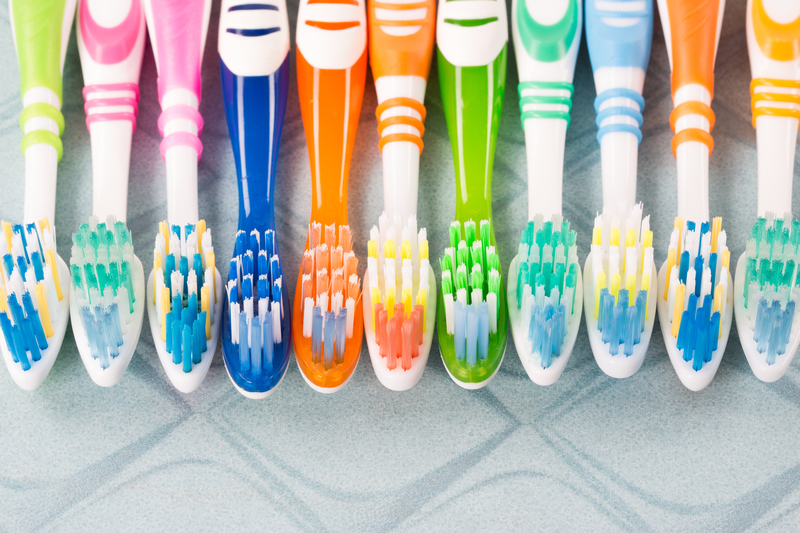
Do you ever look at all the toothbrush options at the store and wonder what the difference is between all of them? Toothbrushes come in all shapes and sizes, and it’s for a reason. They are made to fit certain sizes of mouth. Bristles come in various materials and designs, and there are extra features on some toothbrushes. So what should you choose? Use these tips for the next time you pick out your toothbrush so you know you’re getting a good one for your mouth!
Why So Many Different Kinds?
For something that is so simple to use, there sure are a lot of different toothbrushes out there. Toothbrushes have been around for centuries, with some historians quoting them as being as old as 3000 BC! Ancient civilizations used a “chew stick,” or a twig that had a frayed end in which they would brush their teeth. The common bristled toothbrushes that we are so familiar with didn’t come into existence until around 1498 in China. The bristles that were used in these toothbrushes were actually hog hair that were attached to handles made of bamboo or bone. Even these evolved, though, into the toothbrushes that we use today, but instead with nylon bristles and plastic handles.
Since World War II, oral health has increased in popularity and a variety of different toothbrushes have been invented. But which ones are best? How do you know which toothbrush is for you? Toothbrushes are specifically designed for different sizes and shapes of mouths, plus there are age-specific toothbrushes, like for children, that have smaller (or larger) handles and bristles depending on the age of the person. No matter what toothbrush you use, the principle behind it should be the same: improve your oral health care and prevent disease. Your toothbrush should be helping you do that, if you’re using the right one.
Types of Toothbrushes
There are basically two types of toothbrushes: soft-bristled and hard-bristled. Most dental professionals agree that using a soft-bristled toothbrush is best for cleaning plaque and debris on your teeth. Hard-bristled toothbrushes are not recommended as they are known to wear away your enamel and can lead to gum recession and lesions. Although they do remove more plaque than traditional soft-bristled toothbrushes, hard-bristles cause more damage than good, even when trying to get rid of tough plaque. Toothbrushes with small heads are also great to use because they can get into the hard-to-reach places in your mouth. When deciding between a small-headed or large-headed toothbrush, keep in mind that the size of your mouth should be the determinant for which one you buy. Those people with large mouths should use a full-sized toothbrush head, while those with smaller mouths should utilize a more compact head.
Toothbrushes also vary in the type of the handle (non-slip grip or flexible neck), shape of the head (tapered or rectangular), and style of bristles (rippled, flat, or dome shape). Although there are a variety of kinds, ultimately the best toothbrush is one that fits your mouth and allows you to reach all of your teeth easily. To figure out which one works best for you, trying toothbrushes with different bristle styles or head shapes is recommended until you find one that is most comfortable.
Manual or Electric: Which is Better?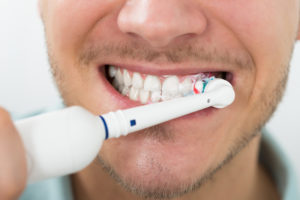
With the advent of the electric toothbrush, many people have been drawn to its ease of use and effectiveness. While manual toothbrushes have been used for centuries, the electric toothbrush is faster and more efficient. If you’re a diligent brusher, manual toothbrushes are a great option, but for those who want the toothbrush to do the work for them, electric is the way to go. Just like manual toothbrushes, electric toothbrushes come in different sizes and have a variety of replaceable heads. Electric toothbrushes are known for having smaller heads than manual, so at the beginning, it may take some time getting used to their small size.
Because of their size, electric toothbrushes are able to clean teeth more thoroughly and get to hard-to-reach areas of the mouth better than manual toothbrushes can. Electric toothbrushes also use different types of bristles movements, such as oscillating/rotating technology, that has been proven to remove more bacteria and plaque than manual toothbrushes. Additionally, electric toothbrushes have a smaller likelihood of hurting your enamel and gums, which is advantageous for those individuals who have sensitive teeth and gums. Whether you choose manual or electric, the most important takeaway is that both fit your mouth size and allow you to clean each individual tooth. If your toothbrush can do both of those things, you’re on your way to achieving great oral health and a nicer smile.
Tips For A Cleaner Mouth
Having the correct toothbrush for your mouth is the first step in maintaining good oral health. But a common question that many have is, “What is the correct way to brush my teeth?” When using a regular soft brush, make sure to angle the brush along the gum line and brush down from the top, then up from the bottom on each tooth in small circles. This motion helps get out the tiny food particles stuck between your teeth, plus it protects your gums from over-brushing. If your gums tend to bleed when brushing, that usually indicates that the gums are inflamed and those areas should actually be brushed more thoroughly and more often. Also make sure that you are brushing your chewing surfaces, the inside of your teeth, and your tongue.
For more tips on how to protect your teeth and maintain a healthier mouth, visit your local provider at Belmar Orthodontics. Change your oral health for the better by calling (303) 225-9016 and setting up your first consult for the comfort, care, and personalized treatment that you deserve!
What are Palatal Expanders?

Palatal expanders—usually worn by preteens—are commonly used to widen the jawbone and help treat certain orthodontic conditions. Expanders help prevent tooth extraction and can sometimes shorten the time needed for orthodontic treatment. Expanders may sound extreme, but arch expansion is one of the most common ways to eliminate crowding and crossbites in growing patients. While adapting to a palatal expander usually takes a day or two, it may take up to two weeks. Learn all about palatal expanders and how they can help your orthodontic care!
Infant Teeth Vs. Adult Teeth
A child’s mouth is not like an adult’s mouth. An infant will begin to get their teeth between 6-12 months. They will have the bottom two front teeth come in first, followed by the upper two front teeth and so on towards the back of the mouth. These teeth will be spaced out more than the adult teeth and there will only be 20 instead of 32 like an adult has. The spaces will allow growing room in your mouth for the permanent teeth to come in once your child is old enough to get them.
Between the ages of 6 and 13, your child’s baby teeth will begin to fall out in order to make way for the adult, permanent teeth. This is an exciting time, as your child is beginning to grow into a teenager, where they will have adult teeth. This childhood time of growing is the easiest time to fix bite and alignment problems.
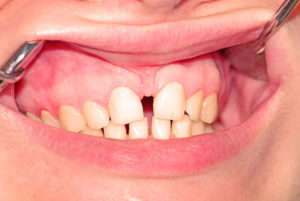
Child Orthodontics
We not only do orthodontic treatment for adults, but also for children. The American Association of Orthodontics recommends that children have their first orthodontic visit between the ages of 7 and 8. Having an examination early-on helps prevent the progression of orthodontic issues that can become severe as your child ages. We mostly look for proper bite and teeth alignment, but we also make sure that there is enough room in your child’s mouth for the adult teeth to come in properly.
If we find that your child’s bite is not aligned, we will fit them for braces. This will bring their bite back into proper alignment, thus reducing the risk of crooked and broken teeth, speech impediments, problems eating and chewing, and problems with the adult teeth. We refer to this early orthodontic intervention as “child orthodontics”. Some patients have a small mouth with a small palate. A small palate can cause many health problems, which is why we have a service for palatal expanders.
What Are Palatal Expanders?
Some children’s jaw’s aren’t big enough for their incoming adult teeth. Sometimes, removing a tooth is the best option for a patient to make room for their adult teeth. However, we like to try palatal expanders first to make extra room in your mouth without removing a tooth. The palate of the mouth is the roof of the mouth above the tongue. That’s where palatal expanders are used. These are appliances that stretch parts of your mouth where bone and cartilage lie so that more room grows in your mouth. Palatal expanders are generally used if there is enough bone and gum tissue around the teeth. If not, a tooth is removed instead. There is an upper and lower jaw palatal expander, which do the following:
- Upper Jaw Palatal Expanders – An expander in the upper jaw of the mouth seeks to stretch the bone and cartilage of your palate. Expanding this area will grow and stretch a child’s arch so there is room for all the adult teeth. Making this extra room through natural stretching will prevent crowding of the teeth as well as cross bite problems in children. Palatal expanders in the upper jaw are actual appliances we stick in your mouth to stretch this area. We attach the expanders to your back molars with metal rings. In some patients, the attachments are removable. As a child’s mouth expands, you may notice a gap starting to form between the two front teeth. This is normal and their appliance is in for several weeks or months.
- Lower Jaw Palatal Expanders – This type of expander will simply moves the teeth if they are tipped inward instead of straight up.
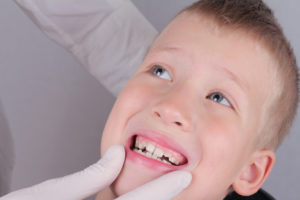
Additional Appliances
There are also other devices we use in certain cases when it comes to orthodontic care. Some patients will need TADs to help shift their teeth into a straighter position. These are “Temporary Anchorage Devices” that are mini titanium screws. These are sometimes referred to as “mini-implants” or “micro-implants”. They are screws that provide a fixed object that is used to push, pull, lift or intrude teeth during the straightening process.
If you need tads, Dr. Hardy will carefully numb your gum tissue and jaw area before placing these tiny screws in your jawbone. With our local anesthesia, this procedure is completely painless and getting accustomed to your TADs only takes 1-2 days total. These anchorage mini screws will help your orthodontic treatment be faster.
A Straighter Smile for You
Dr. Hardy will evaluate your teeth to determine if palatal expanders, TADs and other appliances are needed for your teeth. Palatal expanders are needed before you receive braces and TADs are used during your time with braces. Palatal expanders is one step closer to a beautiful smile for our patients. If you want to know more or are ready to get braces, call Belmar Orthodontics today at (303) 225-9016!
Invisalign Transparent Aligners or Metal Braces?
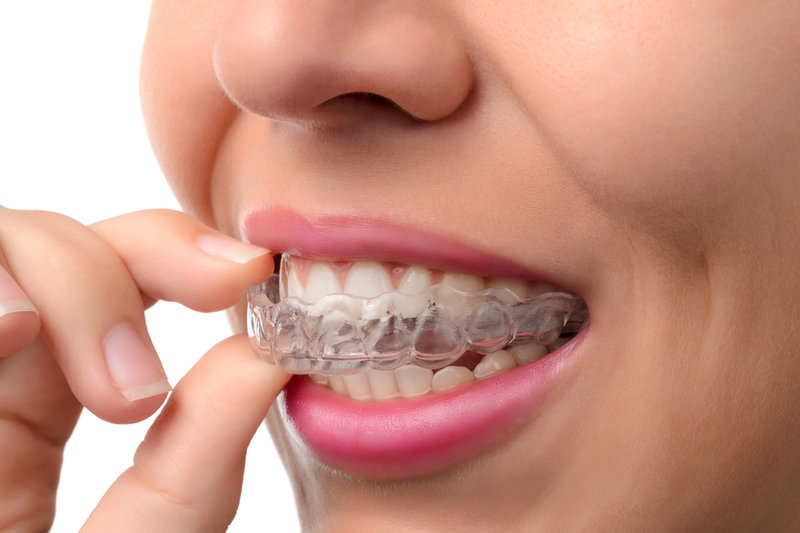
Woman wearing orthodontic silicone trainer. Invisible braces
We offer many different straightening methods at Belmar Orthodontics including Invisalign transparent aligners and traditional metal braces. In the past, traditional metal brackets were the only option for teeth straightening around. With the advancement of technology, we are now able to align the teeth with transparent aligners that work just as well as metal brackets. What are the differences between aligners and metal brackets? Which option is better for you when it comes to choosing between the two? We can answer all of your questions about Invisalign aligners and traditional metal braces and help you find the right straightening method for you.
Traditional Metal Braces
Metal braces are also known as “traditional” braces? Why? They’ve been around for decades and have proven time and time again that they work. Years ago they became the go-to option for orthodontic care and have stood the test of time. There have been tweaks here and there to make metal braces more modern, but overall, not much has changed. They are still the most popular option for braces among teenagers and the most economical choice for orthodontic care.
Metal braces consist of metal square brackets that are attached to the center of each tooth with a special type of bonding glue. This glue is strong enough that the brackets stay bonded to your teeth, but also versatile enough that the glue can be removed once treatment has come to an end. Metal braces have a thin wire that connects and goes through each bracket on the upper and lower jaw. In total, you will have two wires. These are known as “archwires” and they create an arch in your mouth that follows the natural curve of the jaw. Over time, these archwires will move the teeth into proper place so that they make the perfect, straight arch on the upper and lower jaw.
What Are Invisalign Transparent Aligners?
If you’ve looked into options for orthodontic care, you may already be familiar with Invisalign. This treatment option is a series of transparent aligners that slowly mold your teeth into proper position over time. Your doctor will scan your teeth using a digital scanning system that will then create 3D images of your teeth. You will then receive custom-made aligners made from Invisalign’s SmartTrack material. This material is transparent yet strong. The clear, removable design of these aligners renders this orthodontic treatment virtually invisible to others.
The best part is that Invisalign works well just like traditional metal braces do for shaping your smile. Simply change out your transparent aligners ever 1-2 weeks and watch how your smile changes over time. Adults and teenagers alike love this option for orthodontic care because of their ease of use Patients can eat, drink, and clean their teeth with ease. These aligners must be worn the majority of the day, but can be removed when needed for certain activities. Invisalign transparent aligners are more costly than metal braces, but you gain the benefits of easy use and cleaning, and the ability to straighten your teeth in secret.
Adult Orthodontics
Orthodontic care is not only for teenagers. About 25% of all braces wearers are adults, which is a higher percentage than it’s been in the past. Why is this? In decades and years past, people only had one choice when it came to braces: traditional metal braces. Some adults and teenagers avoid receiving braces although their smile needs them. Why? Because they don’t like the look of braces or they feel they are unattractive, distracting, or childish. Studies actually show that braces are quite the luxury to have. However, modern-day orthodontics offer treatment options everyone can be comfortable with.
Your Options
Options for orthodontic care include both traditional metal braces and Invisalign transparent aligners, but you can also choose
- Ceramic Braces – These are the same size and shape as metal braces. They function similarly to traditional metal brackets but they use ceramic brackets that are made to match the color of your teeth. Many patients love this cosmetic benefit of blending the braces to the teeth. Even the archwire can be made white! The ceramic has been shown to be much more resistant to staining and helps protect your smile from demineralization.
- Lingual Braces – Lingual braces are an amazing alternative to traditional metal braces. Lingual braces are a close cousin to metal braces. They actually look quite the same, except for the fact that the braces run along the inside of the teeth next to the tongue. You can achieve the same results as traditional orthodontics in a manner that is inconspicuous and undetectable. Dr. Hardy will make a custom mold of your teeth so that custom metal pieces can be made for each tooth back. These will then be attached snug to the inside of the tooth along with the brackets. An archwire will complete the braces and you can begin to experience the straightening power of lingual braces.
Keep Your Smile Straight
It’s never too late to correct orthodontic conditions you have. The benefits of adult orthodontics include: faster treatment time than former techniques, more discreet treatment options, correction of dental issues, increased confidence and even increased self esteem. When it comes to starting your journey to a straighter smile, we have options for you! To see if you are a great fit for ceramic braces or Incognito lingual braces, contact our Belmar Orthodontics office today at (303) 225-9016 for your free consultation. A straighter smile is just one call away!
Why Adult Braces Are So Important
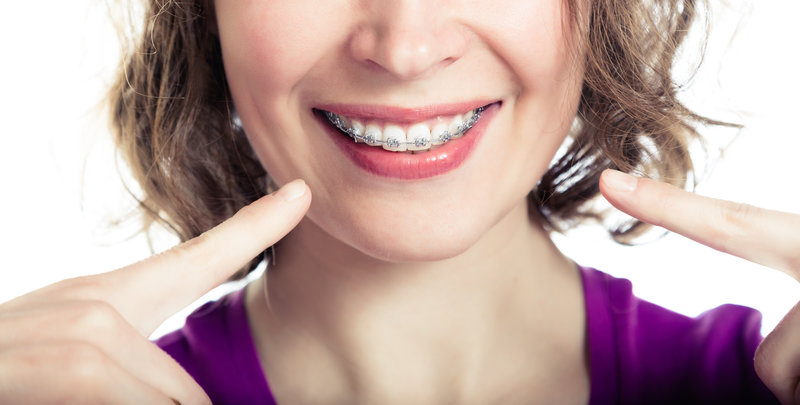
How important are adult braces? Not only do braces enhance your appearance, but they help prevent tooth decay and oral health problems. The American Dental Association tells us that braces are used to correct bite problems and malocclusion. Correcting these problems helps prevent oral health issues such as tooth decay, gum disease, jaw problems and even tooth loss. Proper orthodontic care goes beyond simply improving your oral health. Braces will give you added confidence that will boost performance in all facets of your life. Let us show you just how important braces are and why you should invest in them whether you are an adult or a child!
Braces for Children and Teens
About 75 percent of orthodontic patients are children and teens. Of that number, the majority opt to have traditional metal braces. Traditional metal braces are the most economic choice for orthodontic care if you are looking to improve your smile without breaking the bank. Children can receive braces as early as 7 or 8 years old depending on their needs. The adolescent years are the most common period for receiving braces when the head and mouth are still growing (especially the jaw). When children as young as 7 or 8 receive orthodontic treatment, it is usually to correct problems with alignment or bite that can become severe in later years. This early intervention ensures that teeth come in correctly in a child’s mouth and that the bite is aligned correctly. This will help correct problems with speech, biting, chewing, talking and even physical appearance.
Why Orthodontic Care Is Important
Orthodontic care during the adolescent years is generally used to correct alignment by straightening the teeth. Both bite correction and proper alignment is vitally important to oral health. When the teeth are crooked, problems such as tooth decay and gum disease can easily set in. This is because food becomes trapped in the teeth when you eat and is much harder to remove when the teeth are crooked. Gums can become irritated when plaque sits on the teeth for too long. Over time, plaque-infested gums can become red, swollen and can bleed easily–especially when flossing. Gums can even begin to recede to the point where the teeth fall out. Recession occurs more frequently with teeth that are crooked and harder to clean. Teeth that have been straightened through orthodontic care avoid some of these challenges.
When bite is misaligned, the teeth can come in crooked in a child. Patients may have overbite, underbite, crossbite, openbite or malocclusion. All of these types of misaligned bites will interfere with eating and speaking as well as the physical appearance of the mouth and face. This is because many of the teeth overlap one another abnormally or one jaw protrudes more than the other. Orthodontic care through braces for children and adult braces can correct these problems. Orthodontic treatment through adolescent and adult braces can help ensure that there is enough space for all the teeth to sit comfortably in the mouth.
Other Reasons to Invest in Braces
Are braces something you should invest in? The answer is yes! Whether you seek adult braces or braces for children and teens, you are making a decision that has far-reaching effects. The majority of people will experience crooked teeth at some point. What you decide to do about it is up to you.
Braces—even adult braces—are actually quite desirable today according to reports by the Los Angeles Times, The Washington Post, The Wall Street Journal and more. The amount of adults wearing braces rose 24% between 1989 and 2008 alone and that number has continued to rise. Why? Braces have become more affordable and more attractive. Insurance even covers part of the cost for many patients. Braces are also more comfortable than they were in the past and there are more options for patients seeking orthodontic treatment. The social benefits of braces alone draw people in as well.
Studies About Adult Braces
There have been many studies done about the importance of braces. Invisalign conducted one such study several years ago that recorded more than 1000 responses by pedestrians on the street. These pedestrians were asked to choose from two pictures of people placed side-by-side. Who would they trust more? Who seemed more confident? Respondents did not not beforehand that the comparison was between people with straight smiles and people with crooked smiles. From that study, it was found that those with straighter smiles were perceived as more confident, more successful, more attractive and up to 70% more trustworthy. All from a better, straighter smile!
Proper orthodontic care can also get you ahead when it comes to job interviews and new opportunities. Because a straighter, more beautiful smile has been shown to exude all of the characteristics above, those traits are also perceived in job interviews and during first impressions. Adult braces can help you land that job you’ve wanted and can help you get ahead professionally.
Your Options at Belmar Orthodontics
Traditional metal braces are just that: traditional. This is the most common option chosen by patients when selecting what type of orthodontic care they want. This choice is often popular with children and many teens and has proven through the years to provide exceptional straightening power. Adults and teenagers alike will sometimes avoid needed orthodontic treatment because they find traditional metal braces to be distracting or unattractive. Because of this, we provide you other options when it comes to straightening those pearly whites. These include:
- Incognito Lingual Braces: Metal braces attached to the inside of the teeth that stay hidden.
- Invisalign Transparent Aligners: Transparent aligners that are changed every few weeks to shape your teeth into proper alignment.
- Ceramic Clear Braces: The look of traditional metal brackets made in ceramic form. Both the brackets and wires can be made white to match your natural teeth.
At Belmar Orthodontics, we do all that we can to ensure your mouth stays healthy and your smile bright. Our success is dependent on your success. This is why we offer you so many options when it comes to straightening children’s teeth or investing in adult braces. To learn more about child and adult braces, call our office today at (303) 225-9016!
Why You Need Professional Orthodontic Care
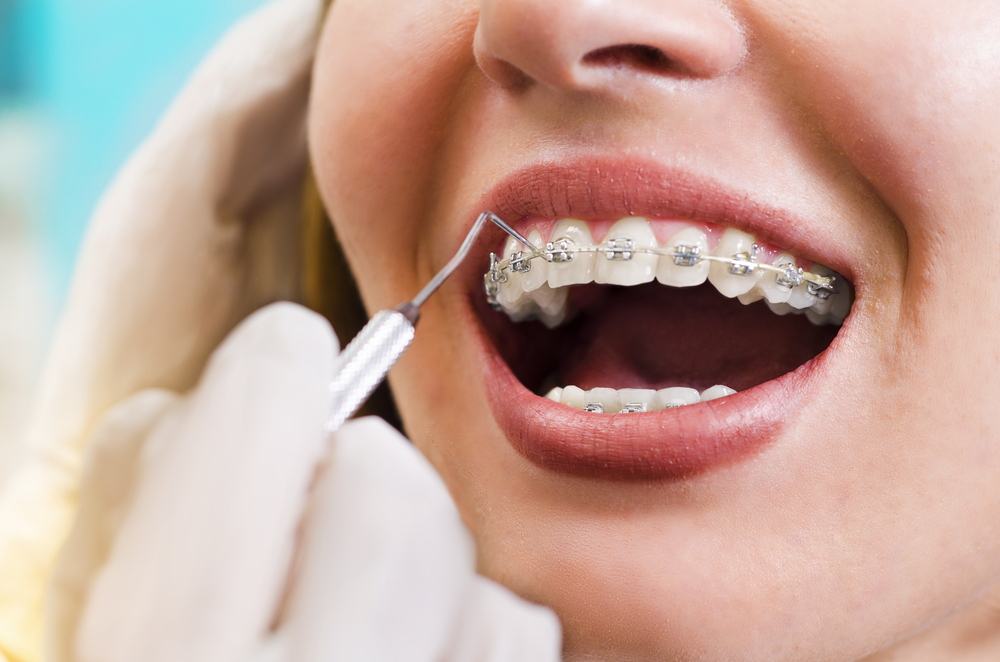
Why is professional orthodontic care so important? The economy has fluctuated from good times to bad times over and over in the last couple of decades. Some people try to cut corners when it comes to achieving healthy smiles by straightening their teeth themselves. Do “cutting corners” and “healthy” go hand-in-hand? Not at all! Only a professional orthodontist is trained to provide you a completely healthy and straight smile that you can’t get anywhere else. Proper orthodontic care can ensure that your teeth stay healthy and free from gum disease, tooth decay and tooth loss. It will also ensure that your teeth move appropriately so that your bite, alignment and function work the way they were designed to. At Belmar Orthodontics, we can provide you a smile that you will cherish the rest of your life. Find out why professional orthodontic care is worth the time, money and effort to achieve a wonderful smile.
Cutting Corners On Your Oral Health
We all know that problems will arise if proper oral hygiene habits aren’t followed. That includes brushing and flossing several times a day (after every meal if possible), seeing your dentist and orthodontist as needed, and making sure the teeth stay clean, straight and healthy in general. You would never want to save some time by cutting out brushing your teeth altogether right? How about flossing? Or maybe never seeing a dentist? There are major problems that can arise from choosing to cut corners on your oral health. Some of the main problems are gum disease and tooth decay that can literally rot your teeth out.
Gum Disease
Gum disease affects over 64.7 MILLION American adults. That means that there are many millions of Americans not taking proper care of their teeth. What does gum disease cause? It begins with gingivitis, or a buildup of sticky bacteria-filled plaque that coats the teeth and irritates the gums. Without cleaning the teeth often enough, the gums will begin to become red, inflamed and even bleed frequently. Skipping on the hygiene will make gingivitis more severe until it becomes full-blown gum disease, also known as periodontitis. At this stage, the gums will recede and the teeth can literally fall out. Yikes! Nobody wants that right?
Tooth Decay
Tooth decay is a problem that’s not far behind gum disease. It also has its beginnings when a person chooses to skip on their oral hygiene practices and keeps doing it. That sticky plaque that coats your enamel is a mix of bacteria and sugar that is actually an acidic substance. The acid will erode your hard tooth enamel and eventually seep into the soft center of your tooth where it will accelerate tooth decay.
Do-It-Yourself-Orthodontics
Gum disease and tooth decay are both serious conditions that you want to avoid at all costs. You only get one set of teeth, so the goal should always be to keep them healthy, right? Cutting corners (even simply skipping cleaning the teeth) causes major damage to your oral health. Do-it-yourself-orthodontics is a new trend that has popped up on the scene. ABC news reported on this trend and how damaging it can be to your oral health. Many people wanted to cut corners with proper orthodontic care and do their own straightening at home using crude methods with rubber bands, fishing line, paper clips and any other material you could think of.
Not surprisingly, many patients (especially adolescents) who attempted to do their own orthodontic care damaged their teeth “so extensive[ly] that teeth cannot be saved.” That comes straight from the president of the American Association of Orthodontists. Do-it-yourself methods of orthodontics are bound to lead to many more oral health problems than you could have ever imagined. So far, it has proved to be disastrous for those who attempt to cut corners. Remember, cutting corners on your health is just that…cutting corners. Nobody comes out a winner.
Proper Orthodontic Care
When you only have one set of pearly whites, why take a chance on losing them? Orthodontists must extensively train for years and attend dental school. They then take an additional 2-3 EXTRA years to study orthodontic practices and how to keep your mouth the healthiest it can be. You get what you pay for and if that’s trying to straighten your own teeth with fishing line, you can bet that you’ll have a low-quality results. With professional orthodontic care, you’re going to get a professional and effective experience. Plus, you’ll actually save yourself time, money and risk of disaster by investing in orthodontic care the proper way.
The cool thing about our orthodontic office is that we offer more than just traditional metal braces. If you want to straighten your teeth more discreetly (or not have anyone know), we have Invisalign transparent aligners, lingual braces, ceramic clear braces, retainers and more. At Belmar Orthodontics, you can be sure to get a beautiful, straight smile AND keep all of your teeth healthy and strong for years to come. Simply call our office at (303) 225-9016 for your free consultation!
Orthodontic Options for Teens and Tweens
Do you have a child that dreads the thought of braces? Many of us who have had braces have felt dread at one point or another when getting braces or having our teeth worked on. There are so many orthodontic options available to kids today–orthodontic work is not like it used to be years ago! Belmar Orthodontics offers orthodontic treatment options that give your child confidence during AND after orthodontic treatment. Teens and tweens have orthodontic options for care that render their braces almost invisible, or, alternatively, give them the option to ramp up the volume on their smile with colorful bands and patterns that they can choose. Building strong, healthy smiles isn’t done in one, specific way, but an orthodontist can help lead you in the right way when it comes to your oral health.
Teens and Braces
Teens rock the braces trend, and it’s for a reason. Those under the age of 16 are in a stage where growth spurts are taking place, and the mouth and jaw is no exception to this growth. Orthodontists usually recommend braces between ages 12 and 16 to capitalize on the rapid growth your teen’s body is going through. They are able to shape the mouth much more easily during this time than any other, where the teeth can be moved and shaped to permanently stay straight. For those younger than 12 that receive braces, this is usually done to fix common problems with malocclusion such as: overbite, under bite, cross bite and open bites that need to be corrected before the teen and adult years arrive. Teeth are harder to correct as an adult when the jaw and teeth are fully developed and more permanently in place.
Do I Really Need Braces?
Not every child does need braces, so it’s important to see an orthodontist to determine what your child specifically needs. The majority of people will need them though, and some that don’t, will still want them for a short amount of time to get their smile even straighter. That’s why options such as transparent aligners are so popular (see below). Teeth that are crooked put more strain on the muscles that chew and are harder to clean over time than straight teeth. Problems with teeth can also cause neck, shoulder, and back pain and lean to gum diseases. Teeth that are straighter are more visually appealing, cause less muscular and facial problems, and are easier to floss and clean. Plus, most teeth stay straight in place throughout your lifetime after braces are used, as long as you do your part by wearing your retainer.
We understand that every teen has different orthodontic needs. You and one of our Belmar orthodontists can help you decide the best orthodontic options for your child and at what age they should have braces. Some teens want or need braces when they are younger and some want braces to be as invisible as possible when they do get them. Today, there are more orthodontic options than the traditional metal braces of the past. Now, there are more ways your teens can make their time with braces more enjoyable!
Metal Brackets
These are the tried and true braces seen most commonly with teens. They consist of metal brackets adhered to your child’s teeth with a metal wire that connects all the teeth together. Metal brackets can correct crooked teeth, spaces in teeth, overbite, under bite, and other jaw problems. They are usually the best option for most teens, especially those who need more than just a simple straightening of teeth. Plus, teens can choose any colors of bands they want for their braces and can change the colors at each appointment.
Invisalign/Transparent Aligners
Invisalign is perhaps the biggest name in transparent liners. These are a type of orthodontic appliance that are similar to fitted, transparent mouth guards. Molds are made for a patient’s teeth and new aligners are used each week to slowly shape teeth until they are straight. Teens put Invisalign ahead of most orthodontic options if they don’t want others to know they have braces. The liners can also be taken out to brush and floss teeth like normal and to eat anything they want (instead of avoiding gum, popcorn, and whole apples like those with metal brackets). The only drawback is that transparent aligners struggle to fix jaw problems (such as overbite and under bite).
Tooth-Colored Braces
These brackets are made to look like your teeth and to appear almost invisible. Matching the bracket system to your teeth offers a cosmetic benefit to your treatment that many of our patients appreciate. Ceramic brackets used in the treatment are also more resistant to staining, helping to protect your smile and keep it looking its best during treatment.
Benefits
An investment in orthodontic braces and appliances are an investment in your child’s overall self-confidence and oral health for life. When it’s time for your teen to get braces, we will make sure to educate you on our advanced orthodontic options so they can obtain the best-looking, most functional, most efficient smile possible. Studies have shown that children and adults alike are more confident when they love their smiles and aren’t embarrassed to show them off. They are also less prone to gum disease (and thus bone loss and decay). We offer specialized plans so your child can get the specific treatment they need. Your child deserves to have a winning smile for the rest of their lives.
Schedule a Consultation to Learn About Your Orthodontic Options
If you have more questions about the types of braces offered by Dr. Hardy or would like to schedule a consultation to learn more about your orthodontic options, please contact our office today at 303.225.9016.

